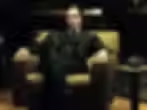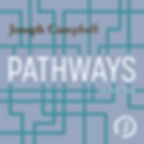Michael Corleone: A Shadow of His Former Self
- Bradley Olson, PhD
- Aug 24
- 7 min read

What better way to explore the power of the shadow—its consequences of inflation—than in The Godfather (1972), a film consistently ranked among the greatest ever made. Given its exalted place in the canon of cultural literacy, I would be surprised to learn of someone who hasn’t seen it, but, nevertheless there are, of course, spoilers in this essay if you haven’t. The Godfather doesn’t simply entertain—it mythologizes. It allows audiences, often unconsciously, to witness the movement of archetypal energies across the screen without fully realizing what they’re seeing: epic tragedy worthy of an ancient Athenian stage.
From the very first scene of Francis Ford Coppola’s masterpiece, we’re confronted with a stark truth: the shadow is not something to be trifled with. It is not an archetype we can summon, impress into service, and dismiss at will. The shadow is not in our employ. The movie gives us a glimpse of light in the beginning, a Sicilian wedding under a bright summer sun—people dance, music fills the air, and the Corleone family gathers in its full glory. It’s a world awash in celebration, in wealth, in the illusion of harmony. But inside the house, the shadow is already at work. Don Vito holds court in his study, granting favors in a room made dark by blood-red mahogany walls, dim lights, and drawn blinds.
“I believe in America,” the undertaker Bonasera tells Don Corleone. Once, perhaps, but its promise has betrayed him. Justice has failed, blind not to class or influence, but blind to the truth. But Bonasera comes to Don Corleone, not as a loyal subject, but as a man who wants to benefit from the function of the shadow without the cost of initiation into it. Bonasera is too calculating, too disingenuous, too much of a tourist in the Shadowlands to realize that he cannot cajole or entice the shadow into his service.
Bonasera didn’t offer kinship, or reverence, or respect—only a transaction. Don Corleone, embodying the old-world ethos of honor and reciprocity, rebukes him: “You never wanted my friendship … and now you come to me and say, ‘Don Corleone, give me justice.’ But you don’t ask with respect.” Before Bonasera can receive the shadow’s gift, he must undergo ritual humiliation. He must plead for friendship, kiss the Don’s hand, bow to the archetype, and accept its cost. The shadow is not a service—it’s a structure, and the archetype must be respected. One cannot express it without consequence. Bonasera, unlike the baker Vito Nazarine, who, happy in his relationship to Don Corleone and honored to supply the elaborate wedding cake, could not integrate the shadow consciously in his life and therefore wound up in service to it.
the shadow is not something to be trifled with. It is not an archetype we can summon, impress into service, and dismiss at will. The shadow is not in our employ.
Outside, the guests keep dancing
We in the audience, like the family at the wedding, are waiting in anticipation. We feel the tension, we have an intuition that someone important enough to change schedules, delay rituals, add members to the family as if by fiat, is approaching. The most important one; the semi-prodigal son has not yet arrived. When Michael Corleone finally appears, he’s in military uniform and posture, a breast full of gleaming medals and a hero’s aura. At his side is his alabaster, all-American girlfriend—a refugee from another cultural world. We sense he is somehow removed from the rituals of the family shadow and it feels, at least for the moment, like relief.
Michael, apparently, is the one who escaped the gravity of the shadow, who resisted its seductions of power, of wealth, of an inflated ego, but lived near enough to tell us exactly how ruthless and monstrous it can be. He bears witness, for those of us still bathed in light, of how dark the shadow can be; like that servant of Job, he only escaped alone to tell us. But what may never be doubted is that the light will soon fade.
Shadow possession: “I’m with you now”
With The Godfather, Coppola (and the novel’s author, Mario Puzo) gives us a trilogy worthy of Aeschylus or Sophocles. All the materials of tragedy are present: cruelty, loss, suffering, yes, but also—and perhaps most importantly—a questioning spirit and the desire to rise above the crushing momentum of tragedy that courses inexorably on toward a violent eruption.
Don Vito is at the height of his power and influence. Politicians, judges, Hollywood studio bosses, all are powerless against his bidding. He is, as Aeschylus described Agamemnon, teleios—fulfilled, arrived at perfection—but as is the way of tragedy, this also means that Vito Corleone, indeed, his entire family, is simultaneously ripe for sacrifice.
In mythic terms, Don Vito’s failed assassination by an underworld rival is more than a play for power—it’s the eruption of mimetic desire, as René Girard might say, in which rivalries escalate and violence seeks to nullify any and all competition. But it is also a botched sacrificial rite, an incomplete slaying of the king. And in myth, a failed sacrifice fails to prevent tragedy—in fact, it compounds it. The archetypal order has been disrupted. The rite is incomplete, the subsequent cost in blood and treasure will be borne by each of the five families.
“Evil is unspectacular and always human,” wrote W.H. Auden, and “No one is ever spared except in dreams.” Michael’s confounding, all-too-human dream of love, evoked by compassion for his incapacitated father, opens the door to a shadow inflation—a possession by the shadow, which occurs when he kisses his hand and whispers, “I’m with you now, pop. I’m with you now.” Trying to preserve the old world, the old fallen world, trying to set it aright, Michael loses his own soul and gives himself completely to the shadow. Not only to his personal shadow, but to the collective shadow that drives his family. His subsequent murder of Sollozzo and McCluskey, the men responsible for the failed attempts on his father’s life, are often viewed as Michael’s point of no return, but that moment already occurred in his father’s hospital room. Sollozzo and McCluskey’s murders are the consecration of the shadow, the apotheosis of Michael’s shadow possession, the moment when the shadow takes complete control, and his distorted face and weeping sinuses perfectly reflect his similarly deformed soul. He has not merely avenged his father; he assassinated what remained of his former self.
Initiation into a new life
At the film’s end, Coppola stages a ritual of extraordinary irony. In a suitably gothic cathedral, Michael participates in the Catholic rite of baptism as godfather to his sister Connie’s baby. The priest recites solemnly: “Do you renounce Satan?” Michael responds “I do.” What plays out isn’t a baptism—it’s a sacrament of Shadow. “Do you renounce his works?” “I do renounce them.” All the while, Michael’s enemies are executed one after another. The cross-cutting is deliberate, liturgical: sacred vows in one world, murder in another. This is not hypocrisy—it’s a Napoleonic installation. Michael is not pretending to be virtuous while secretly wielding violence, he is—like his infant nephew—tragically, irrevocably, being initiated into a new life. He is no longer acting out the shadow—he has become the shadow, anointed by the blood of rivals and sanctified by the ritual sacrament. The organ reaches a crescendo, the baby cries, the murders cease. And it’s as though Michael Corleone—the bright, shining hero—never existed. All that remains is the shadow-Don receiving the final kiss of ultimate power.
Aristotle believed that tragedy, through its depiction of suffering and the ultimate downfall of a hero, allowed the audience to vicariously experience intense emotions like pity and fear. Because the tragedy is vicarious and not personal, one may experience a release, a cleansing, a sense of emotional resolution the Greeks called katharsis. Joseph Campbell wrote in The Inner Reaches of Outer Space that the term referred to “a spiritual transformation brought about by participation in a rite. The mind, ‘cleansed’ of attachment to merely secular aims, desires and fears, is released to a spiritual rapture” (103). I argue that a constituent of that rapture included the acknowledgement of, and compassion for, the sublimely tragic aspects of human existence.
In the words of one of my late, beloved undergraduate literature professors, “From Homer we received the foundations of Western civilization; from Aeschylus we acquired a deeper humanity.”
Thanks for reading.
MythBlast authored by:

Bradley Olson, PhD is an author, speaker, and a psychotherapist. He serves as the Publications Director for the Joseph Campbell Foundation and the host of JCF's flagship podcast, Pathways With Joseph Campbell. Dr. Olson holds a Ph.D. in Mythological Studies from Pacifica Graduate Institute. Dr. OIson is also a depth psychologist in private practice in Flagstaff, Arizona, where he has lived since 1995. Dr. Olson has graduate degrees in psychology from the University of Oklahoma. Dr. Olson offers mythic life coaching at What's Mything in Your Life (bradleyolsonphd.com)
This MythBlast was inspired by The Hero With a Thousand Faces and the archetype of The Shadow.
Latest Podcast
This bonus episode, The Origins and Functions of Myths, was recorded in 1974, though the location is uncertain. In it, Joseph Campbell explores mythology and folklore in relation to the "emergence of humankind." He emphasizes the importance of addressing these topics in this context, noting that myth is coequal with humanity and emerged alongside the human species.
This Week's Highlights
"The word “catharsis” (Greek katharsis; from kathairein, “to cleanse”), which in Aristotle’s usage denotes the effect of tragedy as “effecting through pity and terror a katharsis of these emotions," was a term which referred in the Greek religious vocabulary to a spiritual transformation brought about by participation in a rite. The mind, “cleansed” of attachments to merely secular aims, desires, and fears, is released to spiritual rapture."
-- Joseph Campbell

%20BB.png)








